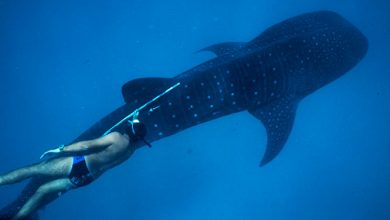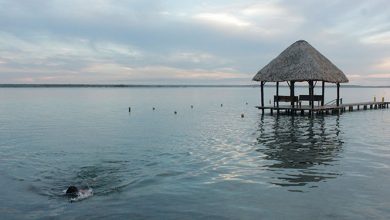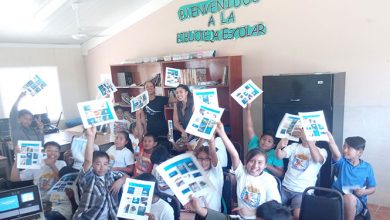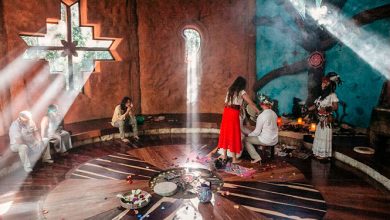Alejandro Arenas: A Lifetime of Protecting Sea Turtles
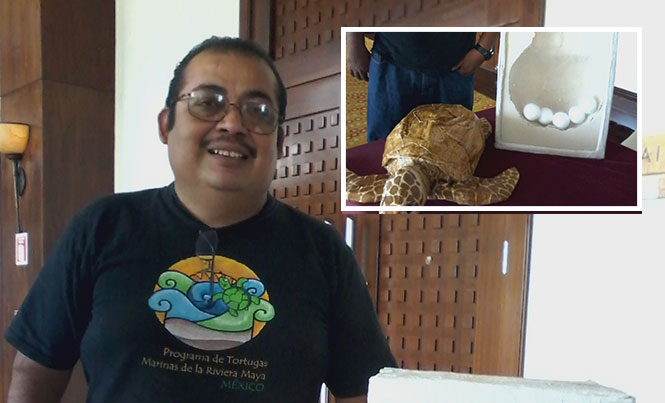
The president of Grupo Tortuguero del Caribe AC sat down with us to explain the risks to the tortugas marinas in the region, what his organization is doing to protect them and what you can do to help
 Alejandro Arenas Martínez, president of Grupo Tortuguero del Caribe AC, (Caribbean Turtle Group AC), has dedicated 26 years of his life to rescuing sea turtles, particularly the four species which come to the coasts of Quintana Roo. The green sea turtle, the leatherback, the loggerhead, and the hawksbill. Five percent of all sea turtle nests located on the coast of Tulum are poached. Unfortunately, turtle eggs are still eaten by a small portion of the local population. However, up until ten years ago, this figure was even higher, reaching up to 50 percent. Although this activity is prohibited, it has not been able to be eradicated.
Alejandro Arenas Martínez, president of Grupo Tortuguero del Caribe AC, (Caribbean Turtle Group AC), has dedicated 26 years of his life to rescuing sea turtles, particularly the four species which come to the coasts of Quintana Roo. The green sea turtle, the leatherback, the loggerhead, and the hawksbill. Five percent of all sea turtle nests located on the coast of Tulum are poached. Unfortunately, turtle eggs are still eaten by a small portion of the local population. However, up until ten years ago, this figure was even higher, reaching up to 50 percent. Although this activity is prohibited, it has not been able to be eradicated.
Arenas Martínez believes Congress should pass legislation providing further protection of sea turtles and should impose harsher measures against those who commit infractions against the turtles, as the eggs and meat are sold illegally, creating a black market.
How did you begin working to protect the sea turtles?
The Quintana Roo Research Center began work protecting sea turtles from 1982 until 1995. I had to do my social service for the Technical School of Chetumal. I didn’t know much about turtles, only from what I had read in books, but reading about them I learned they are defenseless and need human help to survive. Sea turtles have been around for millions of years and were here way before us. At that point, I realized the necessity to help a species in danger of extinction, so I stayed and helped.
What project does Grupo Tortuguero del Caribe AC have planned?
In coordination with the Flora, Fauna, and Culture Center of Mexico, very soon we will have a community center in Tulum which will center around the conservation of sea turtles and the impact of humans, education, health, and understanding that each person’s life should change to be responsible both environmentally and socially.
Where will the community center be?
It is at the very place where Tulum began, close to the Maya ceremonial center because it is where the most turtle eggs and meat are consumed, according to Maya tradition. This practice should no longer be in place because, since 1990, there has been a total ban on the consumption of turtle eggs. The goal is to promote the idea that a turtle is worth more alive than dead, creating employment opportunities and environmental leaders.
How can the traditions of Tulum, where most turtle products are consumed, be changed?
With the involvement of children, teenagers, and adults in conservation programs, and also in liberation and monitoring turtles and creating compassion for turtles.
What are the results of taking care of the sea turtle population?
They have been positive. The green sea turtle population has grown exponentially. In the 80s in Xcacel, there were 60 nests, and now there are more than 3,000. This means that the conservation programs have been beneficial. The loggerhead turtle population has remained stable. In the recent years, there has been a slight increase in their numbers, although not the numbers we had hoped for. The leatherback turtle population is declining very quickly. We have seen very few, and each year only six nests are spotted. They live a long time and need to be at least 30 years old to reproduce.
What can locals and tourists do to protect them?
Don’t disturb the turtles who nest on the beach at many hotels. Remove obstacles from their way that might stop them from laying eggs such as chairs and umbrellas. Be conscious of the fact that the high season coincides with turtle nesting season, and don’t buy or consume turtle derived products. Don’t litter, as this contaminates their habitat, and be respectful of their space.
What is the most satisfying part of your job?
It makes me happy that the green sea turtle and loggerhead turtle populations have grown, after taking care of them for so long. This is thanks to the hard work of many volunteers and the people who have been in charge of this program in Quintana Roo.
The turtle is a symbol of strength and survival, as it is has survived all the natural catastrophes and is still with us. Now is the time to protect it from going extinct.



